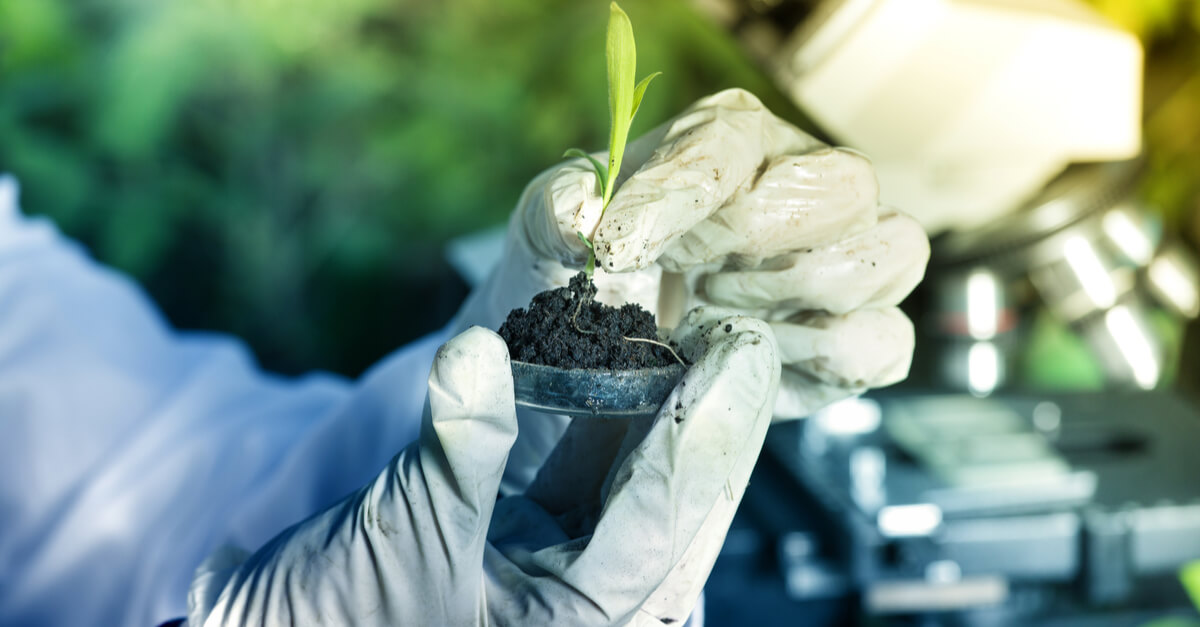Healing the stomach of the plant: Soil condition and recovery

“What is essential is invisible to the eye,” said the fox to the Little Prince in Antoine de Saint-Exupéry’s novel. A premise that may also be applied to agriculture, since successfully growing a crop does not necessarily depend on our direct input, but on external variables like the weather conditions or the technology we utilize. But the key is in the soil. The plant’s true stomach lies immediately underneath our feet, that place where roots penetrate and expand. An ecosystem devoid of light in which a complex yet necessary interaction takes place: the balanced, symbiotic association of plants with millions of microorganisms, facilitating each other’s survival and contributing to the elimination of common threats.
A plot may appear to be nothing more than a piece of fertilized soil, but there’s definitely more to it. Over the past few decades, intensive agriculture has allowed for a significant increase in global cultivation surface as well as improved productivity to assure food supply for a still-growing world population. But we’ve also paid the price: In many cases, soils have been depleted, overexploited and are currently unable to recover properly. As a result, we grow increasingly reliant on chemicals, food quality is reduced, and the need for new arable land rises, with the sole aim to keep the system running when productivity in the fields we are currently exploiting falls. In light of this, anyone can grasp that this situation is unsustainable in the medium to long term.
Depleted soils
The Food and Agriculture Organization of the United Nations (FAO) estimated in 2015 that over 33% of land was “moderately to highly degraded” due to erosion, salinization, compaction, acidification and chemical pollution. The report “Soil Pollution: A Hidden Reality” delves further into the topic. It not only emphasizes agrochemicals as one of the main sources of soil pollution, but also highlights how non-organic pesticides, fertilizer abuse, improper treatment of animal waste and irrigation with low-quality water have a detrimental impact on the soil. Certainly not a promising future.
Non-organic pesticides, fertilizer abuse, improper treatment of animal waste and irrigation with low-quality water are negatively affecting the soil
Consider that for a moment. For the cultivation of large areas, as is the case for soybean or corn plantations, we employ heavy machinery that allows us to optimize the time and resources available, but on the other hand increases soil compaction, reducing underground air and hindering root propagation. As for beneficial microorganisms, their development is hindered, as well as their ability to bind with the plants’ root system. The absence of such symbiotic relationships, in which beneficial probiotics, such as specific fungi, establish an exchange relationship (water and nutrients in exchange for carbohydrates and vitamins), decreases the plant’s capacity to fight harmful microorganisms and the stimulation of its immune system. Therefore, in the absence of that natural process, farmers typically resort to chemical-based pesticides to cover crop deficiencies. As a result, the beat continues unabated.
Natural solutions for soil stimulation
Most of the problems described do have a solution. And they don’t necessarily entail the degradation of soils. There are, in fact, ways to fix the problem and, at the same time, favor soil recovery and stimulate beneficial microorganisms. Our aim should be to promote those beneficial relationships, which indirectly improve plant growth and productivity, without leaving chemical residues, and ultimately increase food quality and its nutritional value. Instead of treating the crop directly, we can get a twofold effect by focusing on its stomach, or the plant’s natural biota. On the one hand, we stimulate soil microorganisms with prebiotics, so that they start releasing nutrients straight to the roots. On the other hand, refraining from using chemical-based products, ensures that no residues are left in the soil or on the fruits.
We can boost soil recovery by stimulating beneficial microorganisms
That’s exactly what we do at Kimitec. We develop biopesticides to protect the crops naturally, without leaving chemical residues, but we also contribute to the protection and regeneration of the soil with our natural fertilizers, excluding external microorganisms and stimulating instead the local microbiota, which will ultimately benefit the crop.
Soil recovery is a collective responsibility, and we shouldn’t just leave it up to the farmers. We can all help by encouraging soil regeneration-friendly production, distribution, and consumption systems. In a world where the world’s population, and hence food consumption, is expanding at an exponential rate, the consequence for not doing so is the increasing destruction of cultivated areas. Without a question, the plant’s stomach holds the key to a better, healthier food system.
